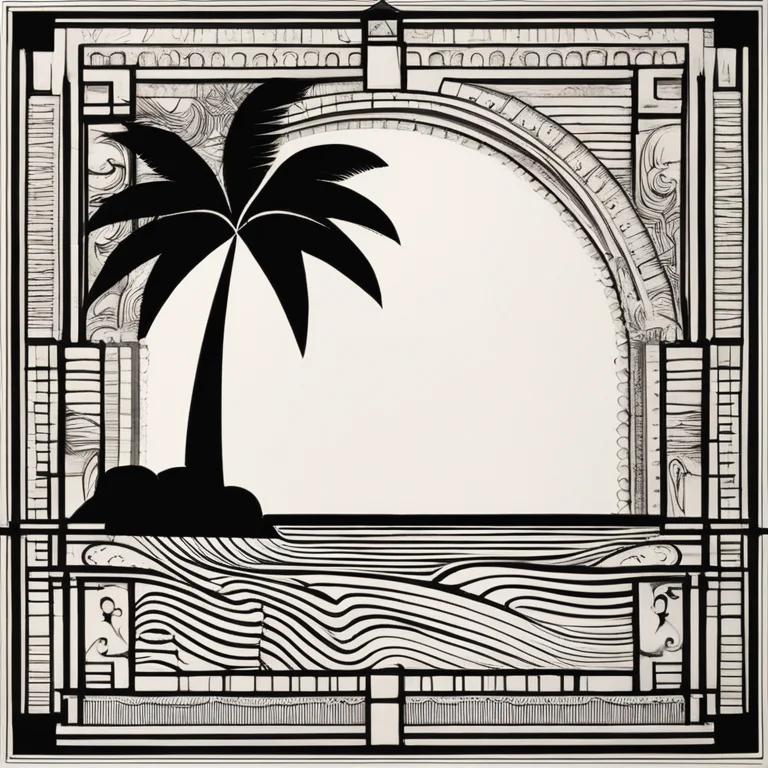
Can Palmistry Foretell Life's Endpoint?
Investigate whether palmistry possesses the mystifying capacity to predict life's final transition, the enigma of death.
article by Nora Pennington
Introductory Insights
Palmistry, known as chiromancy, is the ancient art of analyzing an individual's palms to decipher personality traits and forecast future events. This practice has roots stretching back to astrological traditions in India, China, and Greece. However, its usage to predict death is a contentious subject that both fascinates and disturbs many. As we delve into the role palmistry may or may not play in predicting life's end, it is crucial to approach the topic with sensitivity and rationality.

The Lines of Life and Death
In the intricate landscape of the palm, it is the lifeline that most people interpret as a timeline of existence. Contrary to popular belief, palmists suggest that the lifeline primarily reveals vitality and life quality— not the span itself. A break or end in this line is not an absolute harbinger of death but could indicate a significant change in lifestyle or health. Practical palmistry in 2024 discourages predictions about death, focusing instead on guidance for a more fulfilled life.

Palmistry's Ethical Boundaries
Ethical palm readers today steer clear of making definite proclamations about death. They are well aware of the psychological impact such a prediction can have on an individual. Progressive palmistry practices acknowledge the profound responsibility of advising clients and choose to empower rather than instill dread. Therefore, the question isn't so much whether palmistry can predict death, but whether it should even endeavor to do so.

Science Vs. Spiritual Interpretation
Scientifically, there has been no conclusive evidence to support the idea that one's palm holds the keys to the demise timeline. While there are studies that suggest certain palm lines may correlate with health issues, the prediction of death remains a matter of spiritual belief rather than empirical fact. In an age where data and science reign supreme, palmistry walks a fine line between respecting tradition and adhering to modern principles of evidence-based practice.
Understanding Palmistry's Limitations
Palmistry is one of many metaphysical tools that humans have employed to make sense of the world and our place in it. Whether for entertainment or spiritual guidance, it is essential to understand palmistry's limitations. Like horoscopes or tarot readings, palmistry offers a reflection, not a determinant, of an individual's journey. The future, as most contemporary palmists would argue, is not set in stone and is susceptible to the choices one makes and the dynamic web of life's interactions.
The Consensus Among Modern Palmists
In 2024, the consensus among modern palmists is clear: they generally distance themselves from the sensationalism of predicting one's demise. Instead, they prefer to focus on the aspects of growth, overcoming obstacles, and personal development. This helps ensure that the ancient art remains a source of fascination and comfort without veering into the domain of fear-mongering.
Final Thoughts
Whether or not palmistry can predict death is less of a definitive answer and more of an exploration into the purpose and practice of this ancient art form. Much like life itself, palmistry has evolved, and the contemporary understanding is that it should enrich lives, not unsettle them with predictions of death. The truer value lies in the insights palmistry can provide into one's character and the potential paths life may take, rather than fixing on an unavoidable fate.
Published: 1/11/2024
Modified: 1/11/2024
More predictions
Come back here soon to learn more about yourself and your future


The Secrets of the Jupiter Mount & Palmistry
Discover the significance of the Jupiter Mount in palm reading and how it reflects your leadership and ambition.


The Secrets of Palmistry: Interpreting Hand Reading Lines
Delve into the fascinating world of palmistry and discover what your hand reading lines reveal about your destiny, personality, and future.


Palm Lines: A Guide to Your Hands' Secrets
Learn the art of reading palm lines with our straightforward guide. Discover what your hands reveal about your personality, destiny, and life!